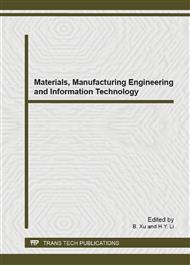p.336
p.340
p.344
p.348
p.352
p.358
p.362
p.366
p.370
Design and Research of Mechanical Manufacturing for Wind Power Generation Device in Highway
Abstract:
For Highway potentially huge wind power resources and difficult issues such as electrical equipment, proposed an unnatural wind would wake at high speed car into electrical energy generated by the new plant. According to the results of measuring the wind speed site, binding studies of literature data, simulation and optimization of the impeller for fan, in order to determine the type of the selected impeller; analyzed by the mathematical model of the car to increase fuel consumption, this means economic results show generated is considerable. On this basis, combining Adams kinematic analysis software for the entire device kinematics simulation results show reasonable movement of the device, which is designed to meet the relevant requirements of power generation.
Info:
Periodical:
Pages:
352-357
Citation:
Online since:
March 2014
Authors:
Price:
Сopyright:
© 2014 Trans Tech Publications Ltd. All Rights Reserved
Share:
Citation:


